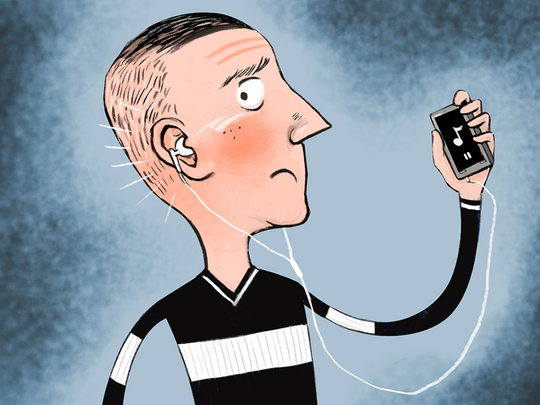
Q: I just got a new iPhone and can’t decide what kind of headphones I should be using. I read somewhere that ear buds are worse for you than headphones that fit over your ear. Is that true? I don’t want to damage my hearing by using the wrong thing.
A: Here’s what science has to say:
At the end of the day, nothing really matters but volume. No pair of headphones is inherently “good” or “bad” for your hearing. But picking the right headphones can help you listen to your music more responsibly.
The louder a sound is, the more quickly it can cause injury to your ears. If you’re not careful, a powerful sound wave can actually tear right through your delicate eardrum, but that’s unlikely to happen while blasting music.
Most hearing loss is the result of nerve damage, and your smartphone is more than capable of wrecking your ears that way. You can be exposed to 85 decibels — the noise of busy city traffic — pretty much all day without causing nerve damage, but things quickly become dangerous once you get louder than that. At 115 decibels, which is about the noise level produced at a rock concert or by a chain saw, nerve damage can happen in less than a minute. You might not immediately notice significant hearing loss as the result of that nerve damage, but it will add up over time.
Some smartphones can crank music to 120 decibels. If you listened to an entire album at that volume, you might have noticeable hearing loss by the time you took off your headphones. According to the WHO, 1.1 billion teens and young adults globally are at risk of developing hearing loss because of these “personal audio devices”.
You already know the solution, folks: turn that music down.
“When I see patients who have hearing loss or an underlying complaint such as ringing, I tell them never to put the iPod above medium volume,” Aaron Pearlman, otolaryngologist at Weill Cornell Medicine and New York-Presbyterian, said. And he thinks it’s a good idea for everyone to keep that little volume slider centred solidly in the middle (or even farther to the left), even if they haven’t noticed any hearing loss yet. “If you do that, you’re never going to have it loud enough to damage your ears,” he added.
Pearlman can’t tell patients what kind of headphones to use, because several factors are at play: ear buds get a bad rap because they sit in your ear canal, emitting the sound closer to your ear, which means you’re getting closer to the full force at whatever decibel the music is playing. Big, padded over-ear headphones might not sit as close to your eardrum, but they still trap in sound so that it reaches your eardrum at nearly full force.
In contrast, those hideously ineffective (and generally hideous) over-ear headphones that used to come standard issue with portable CD players diffuse sound around your ear instead of directing it inward. That’s bad news for your listening experience, but good news for your ears.
Solid-plastic in-ear headphones like the ones that come with the iPhone are also quite bad at blocking out ambient noise, which might make you want to pump up the volume. Noise-isolating over-ear headphones, squishy ear buds or custom-moulded headphones can make the world around you less bothersome.
The right headphones are whichever ones help you resist the temptation to turn the music up. Unfortunately, that’s easier said than done. Pearlman recommends that his patients get custom-moulded ear buds to more effectively block ambient noise, which in theory should encourage them to listen at lower volumes.
“But I think people just have a habit of turning it all the way up,” he said.
–Washington Post













